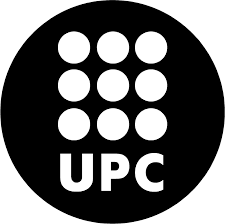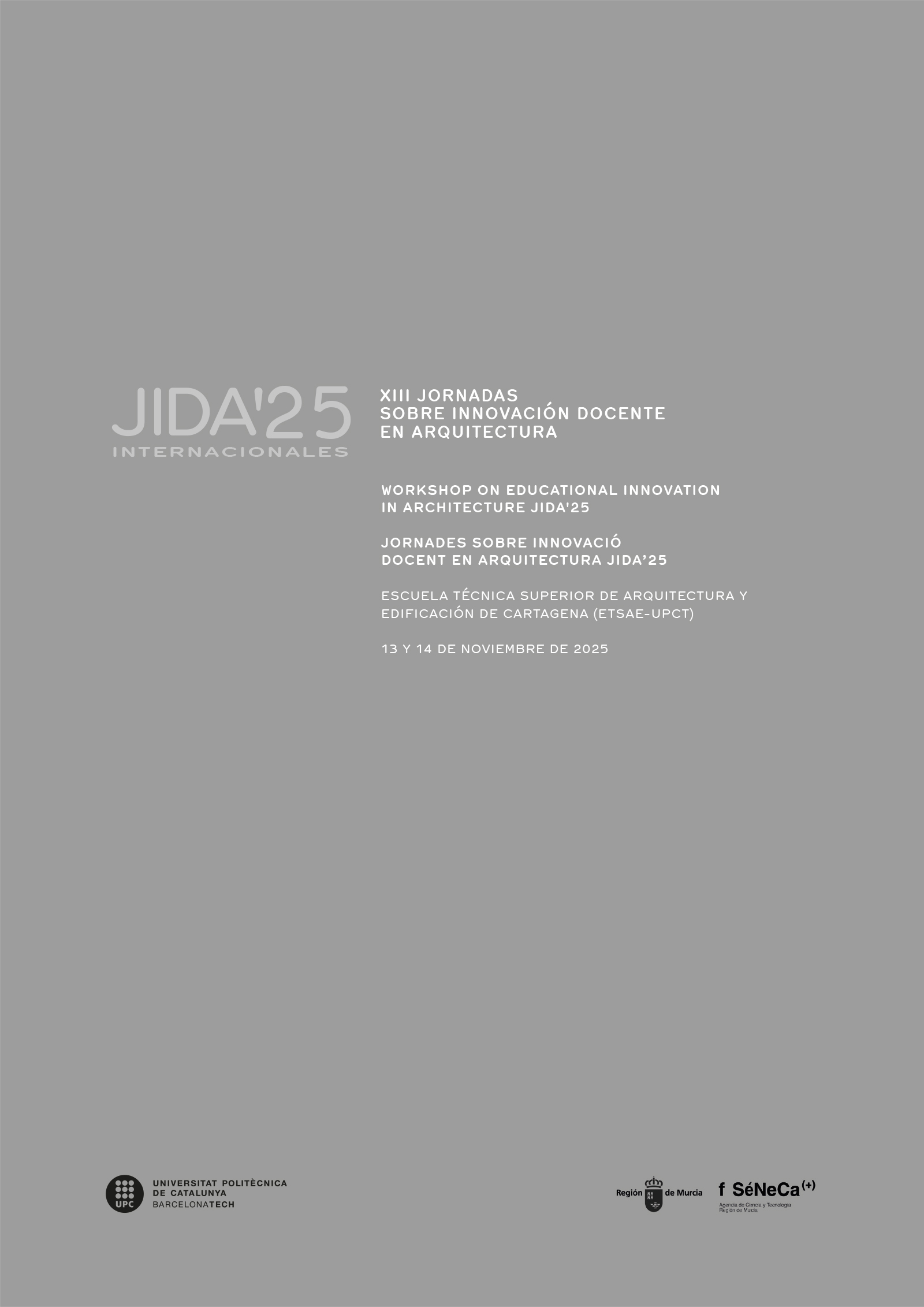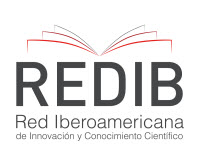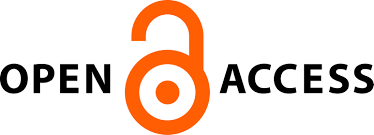Turism_igration: Infrasculptures for a shared spatiality
DOI:
https://doi.org/10.5821/jida.2025.13619Keywords:
migration, tourism, infra-sculptures, spatial negotiation, unequal mobilityAbstract
Urban space serves as the stage where unequal forms of human mobility: tourism and migration converge. This fifth-year Projects studio is framed as a project critical inquiry, exploring how those socio-spatial conflicts can be made visible, amplified, or transformed through situated architectural proposals. The methodology, grounded in Research by Design (RbD), unfolds in three phases that combine theoretical reflection, speculative hypotheses supported by AI-generated images, and material and audiovisual production (video). The course is structured around six thematic layers that address both technical and political questions, prioritising energy self-sufficiency and forms of spatial negotiation beyond institutional logics. The article presents the pedagogical foundations, the methodological framework, and a selection of student proposals that show how design is activated as a critical tool to mediate, enable, and care within urban contexts shaped by unequal mobilities.
References
Vallespín, Nuria. 2025. «IA y creatividad expandida en la proyectación arquitectónica». En I Congreso Nacional “Construir en Clave Sostenible”, Sesión 3 – Industrialización y digitalización (Madrid, 29 de mayo de 2025). CSCAE. Vídeo: https://youtu.be/uh0cjT_ImeQ?si=ffGgIlPM62xXOcpN . Accedido 22 de agosto de 2025.
Awan, N.; Schneider, T.; Till, J. 2011. Spatial Agency: Other Ways of Doing Architecture. London/New York: Routledge.
Comisión Española de Ayuda al Refugiado (CEAR). 2025. Las personas refugiadas en España y en Europa. XXIII Informe Anual 2025. Madrid: CEAR. Cap. 4.2 «La Ruta Canaria», 82–93.
Easterling, Keller. 2014. Extrastatecraft: The Power of Infrastructure Space. London/New York: Verso.
Frayling, Christopher. 1994. Research in Art and Design. Royal College of Art Research Papers, 1(1). London: Royal College of Art.
Harvey, David. 2013. Ciudades Rebeldes: del Derecho de la Ciudad a la Revolución Urbana. Tres Cantos: Akal.
Hejduk, John. 1993. Víctimas. Murcia, España. Colegio Oficial de Aparejadores y Arquitectos Técnicos.
InfoMigrants. «From border to home: Finland’s solutions to the refugee crisis». Accedido 22 de agosto de 2025. https://www.infomigrants.net/en/post/3350/from-border-to-home-finlands-solutions-to-the-refugee-crisis
Instituto Nacional de Estadística (INE). 2025. «Frontur. Viajeros internacionales que visitan España. Marzo 2025 (nota de prensa)». Madrid: Instituto Nacional de Estadística. Publicado el 05/05/2025. https://www.ine.es/dyngs/Prensa/FRONTUR0325.htm
Jaque, Andrés. 2005. «Arquitectura de consenso, o cómo emerge el objeto de representación». Boletín CF+S, 32/33: 273–281.
Lefebvre, Henry. El Derecho a La Ciudad. 4a ed. Barcelona: Ediciones Península.
Organización Internacional para las Migraciones (OIM), Displacement Tracking Matrix (DTM). 2025. Mixed Migration Flows to Europe. Yearly Regional Report 2024 (28/02/2025). Ginebra: International Organization for Migration.
Ortiz, Federico y Ushma Thakrar. 2022. “Trabajar Sin Soluciones. Entrevista Con Keller Easterling.” Materia Arquitectura, nº 23: 22–45. https://doi.org/10.56255/ma.v1i23.532
Recetas Urbanas. «Recetas Urbanas». Accedido 22 de agosto de 2025. https://www.recetasurbanas.net
Sassen, Saskia. 2015. Expulsiones: Brutalidad y complejidad en la economía global. Móstoles-Madrid: Katz Editores. https://www.jstor.org/stable/10.2307/j.ctvm7bdqr
Schön, Donald A. 1992. La formación de profesionales reflexivos. Barcelona: Paidós. [Ed. orig. Educating the Reflective Practitioner, 1987.]
Sennett, Richard y Sendra, Pablo. 2020. Diseñar el desorden: experimentos y disrupciones en la ciudad. Barcelona: Gustavo Gili.
Trujillo Torres, Sebastián. “Un manifiesto de infraestructuras leves”. Dearq nº. 28 (2020): 18-33. https://doi.org/10.18389/dearq28.2020.03






















